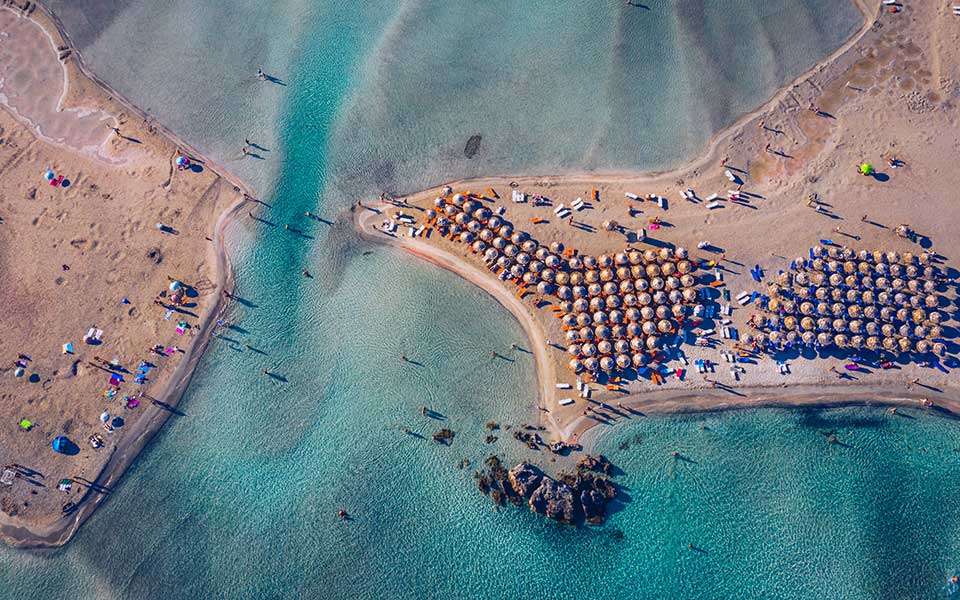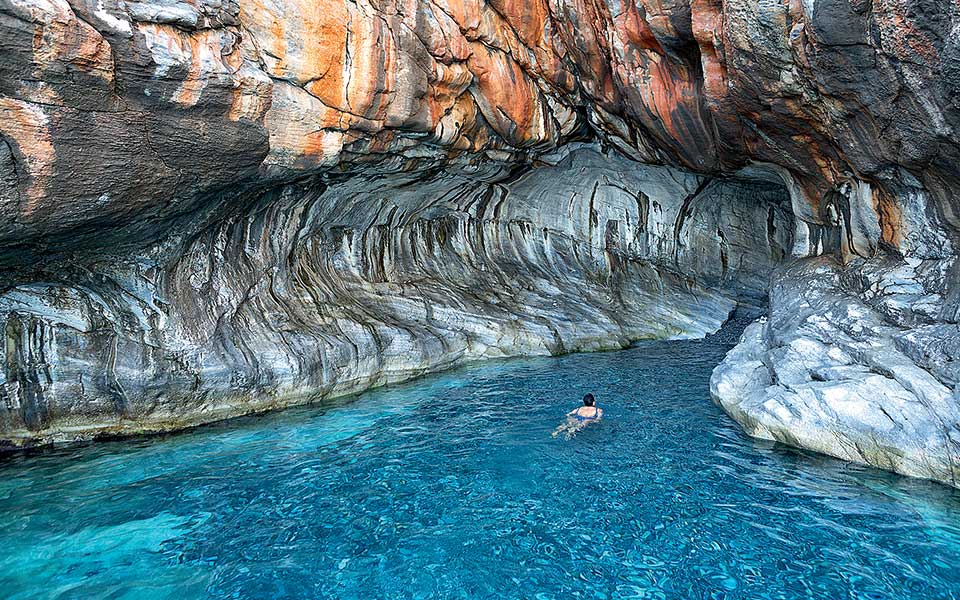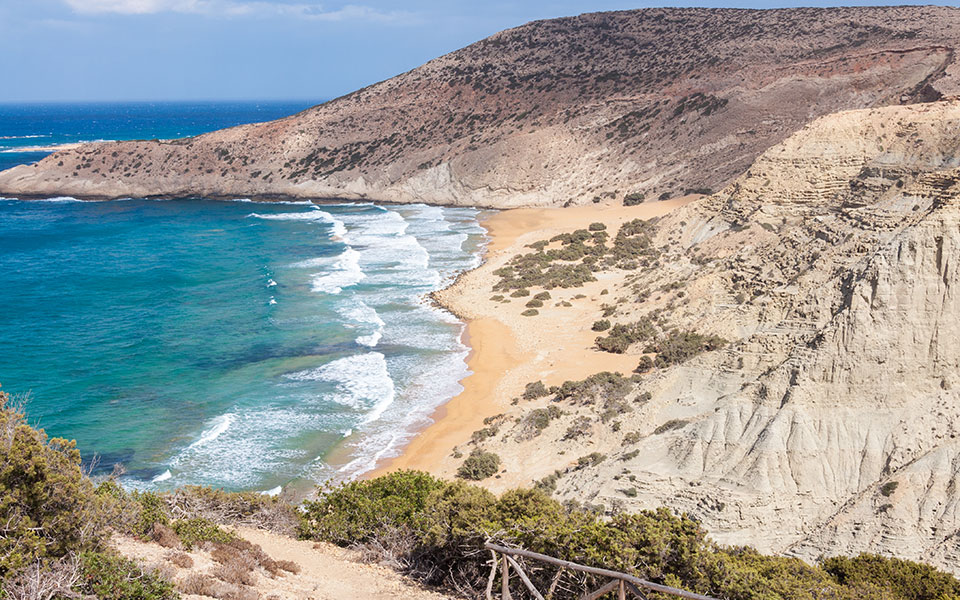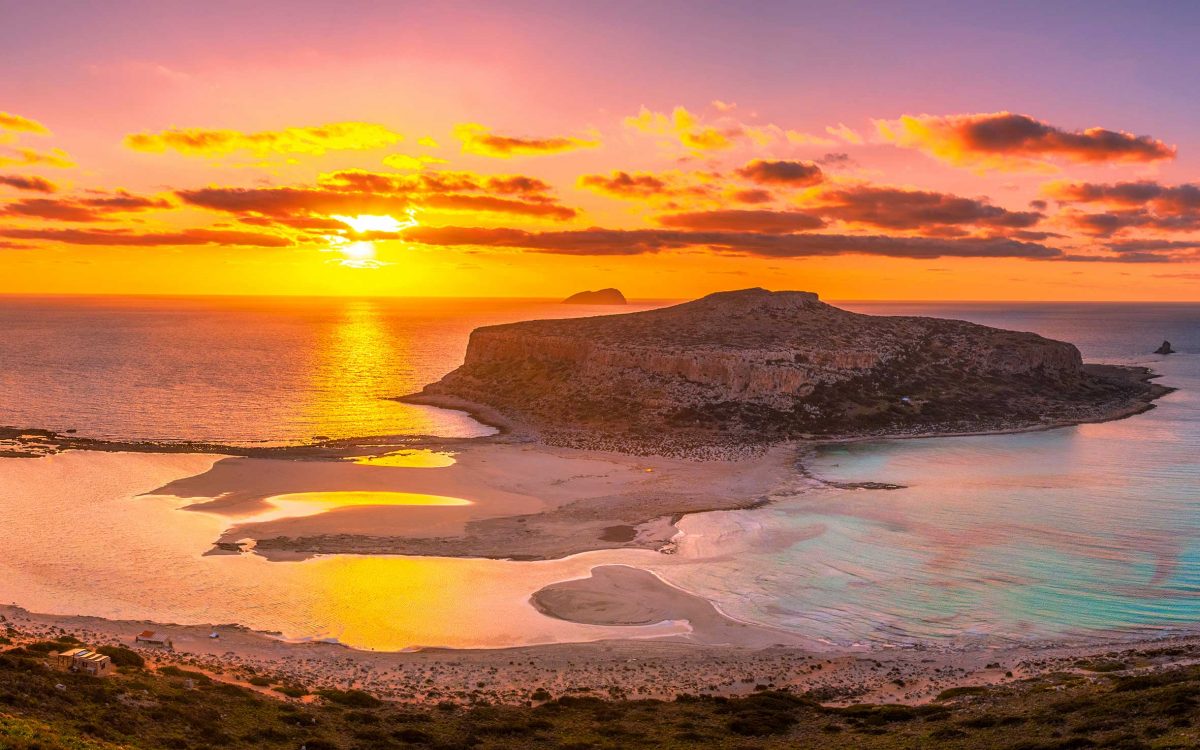The beaches on Hania’s western coast, with their exotic sand dunes, turquoise waters, mastic and arbutus trees offering precious shade, are renowned as some of the best in Greece. But while the most famous of these beaches draw crowds from all over the world, there are plenty more excellent swimming spots for you to discover along the coastline.
Find the one that suits your style most and throw anchor for the day, or better yet, beach hop your way around the region with the help of this little guide.
THE EXOTIC WEST COAST
Balos
Despite its shallow waters, which may not be everyone’s cup of tea, the star beach of the west is Balos which boasts an unparalleled panorama that unfolds before your eyes as you walk the 20-minute path to get to it; there, you can see hundreds of people moving on the blindingly white sand like restive insects and Cape Tigani jutting out into the sea. During peak season the beach gets pretty busy so plan your visit for the quieter months if you want to avoid the crowds.
Gramvousa
To reach the superb sandy beach of the uninhabited islet of Gramvousa, you can take the caïque that connects the port of Kissamos with Balos and makes a stop there. The islet’s Venetian castle is thought to be the first place in Crete to have been liberated from the Ottomans.

© Shutterstock
Elafonisi
Elafonisi is both the name of the beach at the southwestern tip of Crete and the small island just across it to which you can walk, on account of the waters being so shallow. Famous for its pink sand, millions of tiny shells and cedar trees, Elafonisi is also a Natura 2000 protected area.
Falasarna
Its waters are light blue and crystalline, and the sand pink from thousands of seashells (please refrain from taking any as souvenirs, as their numbers are dwindling dangerously fast). It is relatively developed, with shops and rooms to let, and at its northernmost tip you can see the archaeological site of the ancient city of the same name which flourished in the 4th and 3rd centuries BC and was one of the most formidable naval powers of ancient Crete.

© Nikos Pilos
LITTLE GEMS OF THE SOUTHWEST
Kedrodasos beach is washed by crystal-clear water and you will have to make your way through a small prickly cedar forest in order to reach it. Those arriving early get to enjoy the shade of the beautiful trees above the beach. Meanwhile, arriving early at Aghia Roumeli Beach is a challenge, as it lies at the end of the Samaria Gorge; it will be your reward for completing a 5-hour trek.
From Hora Sfakion, you can hop on one of the boats departing for Aghios Pavlos, a beach with pine trees, a taverna and a charming 11th-c. chapel, or for Marmara Beach with its amazing sea caves and the famous Dialeskari taverna (unofficially known as Chrysostomos), serving amazing food. Gialiskari‘s sandy stretch and Krios, a beach of fine shingle, are among the most impressive beaches near the village of Paleochora, and Tripiti, Domata, Likos, Finikas, Glyka Nera and Iligas are all secluded beaches in the area of Sfakia worth exploring.

© Shutterstock
THE BEACHES OF GAVDOS
While exploring the region of Hania and its beaches, it is worth the trip to Europe’s southernmost island, the island of Gavdos. They say that this is where Calypso kept Odysseus as her captive. The southernmost point is the craggy headland next to Trypiti Beach (accessed by boat or via a path) and it is marked by the sculpture of an oversized chair made by a group of Russian scientists, survivors of the Chernobyl nuclear disaster, who chose Gavdos as their retreat. Carved on the chair is the message “Southern point of Europe. Smile. Relax.”
Hundreds of people return to the island year after year, on the ferry from Sfakia or Paleochora, for bohemian vacations on what feels like a place on the very edge of the world. The island has seen some development in recent decades, boasting an organized network of paths and several shops.
In wintertime there are no more than a 100 inhabitants, yet in the summer many thousands visit, with most of them spending the night in tents on the beaches of Aghios Ioannis and Sarakiniko (bathing suits optional). Life on the sand dunes requires no more than good company, and this is available in abundance on the island.
Tune in to Gavdos 88.8 FM to support Vassilis Tzounaras, who broadcasts determinedly from this remote island, and visit the lighthouse, with its little museum and café. It was built in 1880 and it was the second brightest in the world. The sunset here is also amazing.












